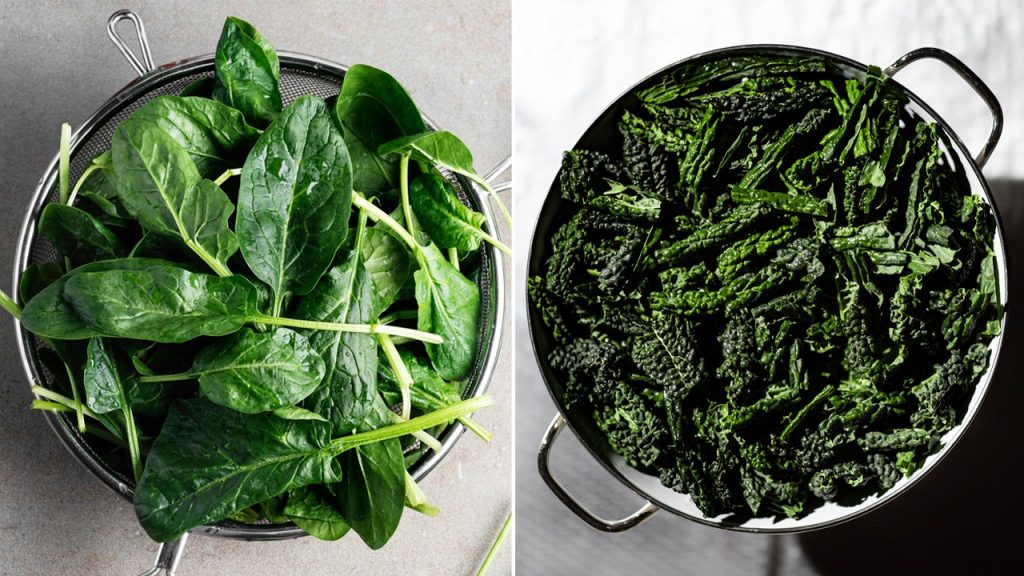Spinach and kale are both extremely healthy and nutrient-dense dark leafy green vegetables, according to experts. While they have some similarities, there are key differences in their nutrient compositions. Kale is known for being a good source of fiber, vitamins A, C, and K, as well as calcium. On the other hand, spinach is a good source of iron, potassium, vitamins A, C, and K, as well as folate and magnesium. Both greens offer unique health benefits and are recommended to be included in a regular diet for maximum nutrition.
Kale is high in fiber and vitamin C, making it valuable for immune system support and iron absorption. It is also rich in vitamin K, important for bone health, and other nutrients like vitamin A and potassium. Cruciferous vegetables like kale are recognized for their potential cancer-protective properties due to their glucosinolate content. Additionally, kale is a good source of antioxidants, which help protect the body from damage. Ensuring proper cooking techniques can help retain the maximum nutrition and flavor from kale, making it a powerhouse vegetable that should have a place in your fridge.
Spinach is praised for its generous levels of vitamins K, C, and calcium. It contains more folate compared to kale, supporting cell division and preventing birth defects during pregnancy. Additionally, spinach is a rich source of iron, which is essential for blood cells, energy, and growth. The fiber content in spinach aids digestion, weight management, and overall health. Spinach is also high in iron, vitamins A, and E, and is crucial in preventing anemia. As part of a balanced diet, spinach can support immune function, aid digestion, and have potential anticancer properties.
There is no clear winner between kale and spinach in the battle of healthier choice, as both offer unique benefits that cater to individual preferences and dietary needs. For individuals seeking high fiber, vitamins K and C, kale is a better choice, while those looking for folate, iron, and vitamins A and E may opt for spinach. To maximize nutrition, it is recommended to include a variety of fruits and vegetables in your diet, including both spinach and kale. Eating a variety of colorful fruits and vegetables ensures the intake of essential nutrients and keeps meals interesting and enjoyable.
Both kale and spinach can be consumed raw, cooked, or juiced and can be added to a wide range of dishes, including salads, soups, smoothies, and stir-fries. When choosing fresh spinach or kale, look for leaves that are fresh and green, while avoiding any that are yellow or brown. Frozen options are equally nutrient-dense and budget-friendly, offering a convenient storage solution that allows for long shelf life without spoilage. Meal prep ideas include cooking either spinach or kale with chickpeas and serving with tahini sauce for a delicious and nutritious meal. Experimenting with both leafy greens in various recipes can help you enjoy their distinct flavors and health benefits while maximizing your overall nutrition intake.


